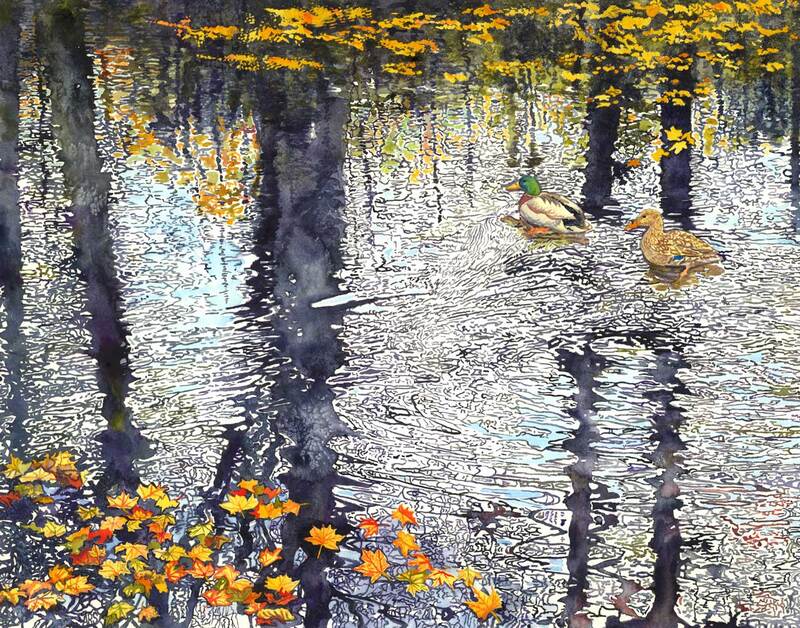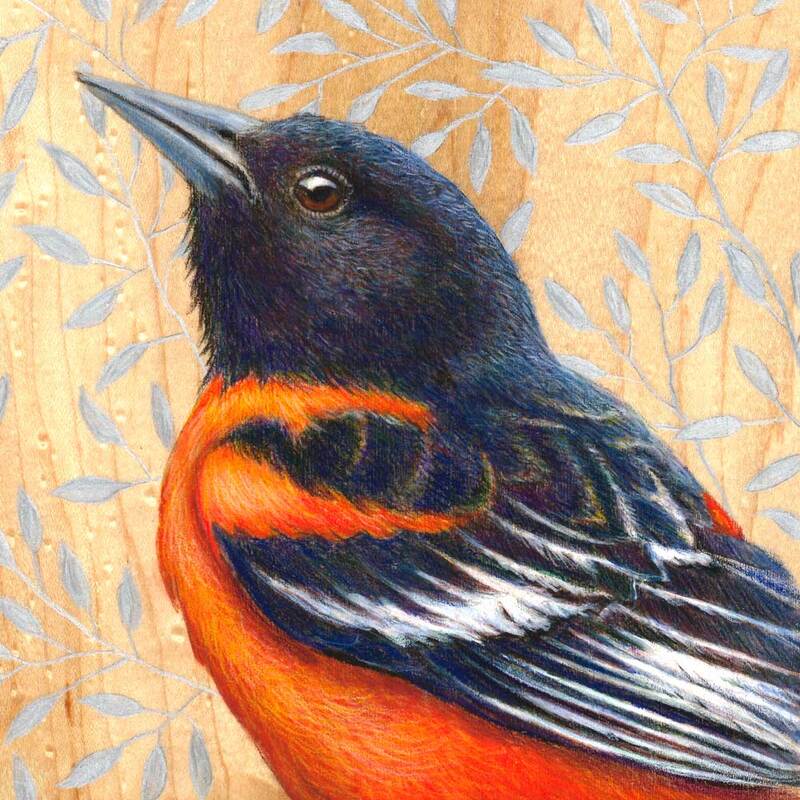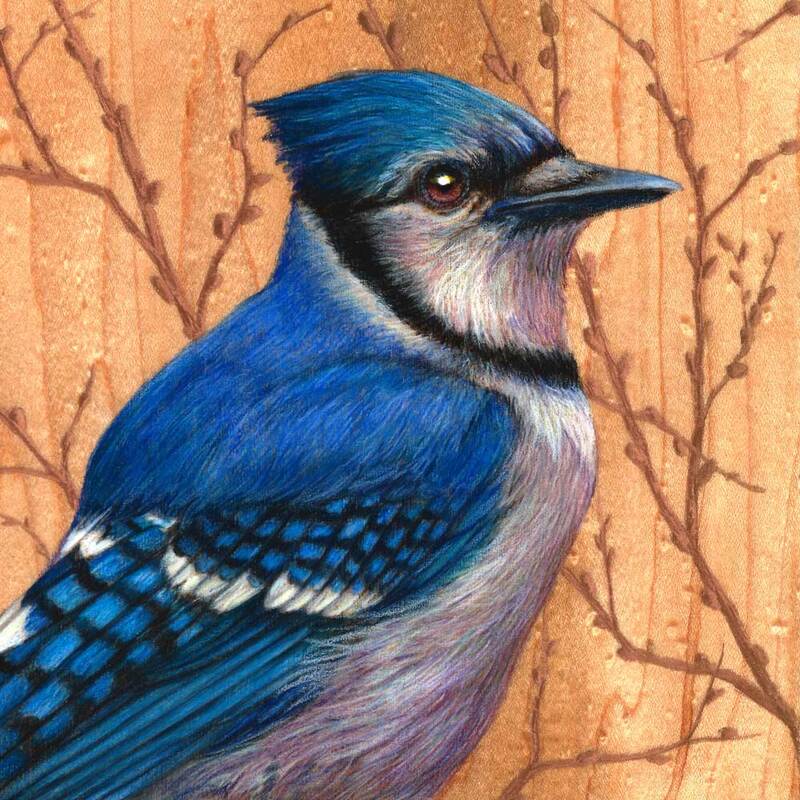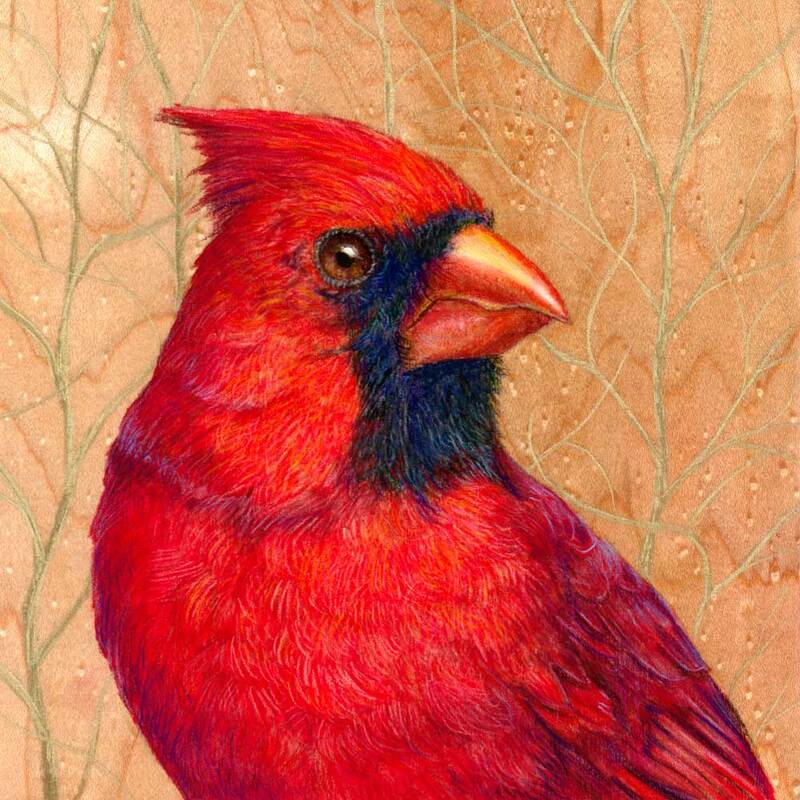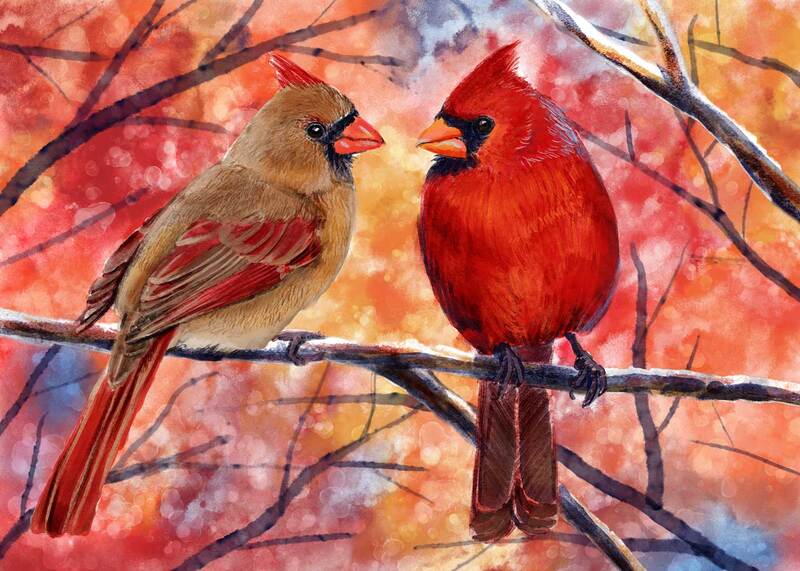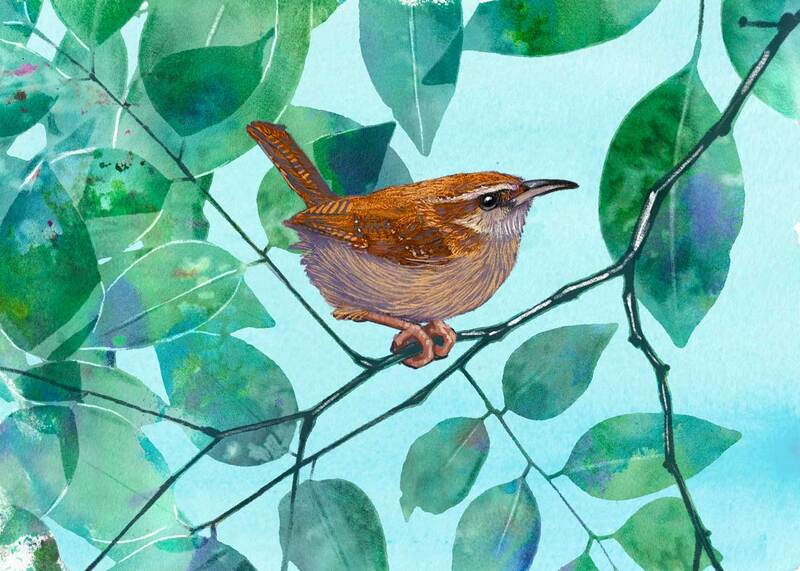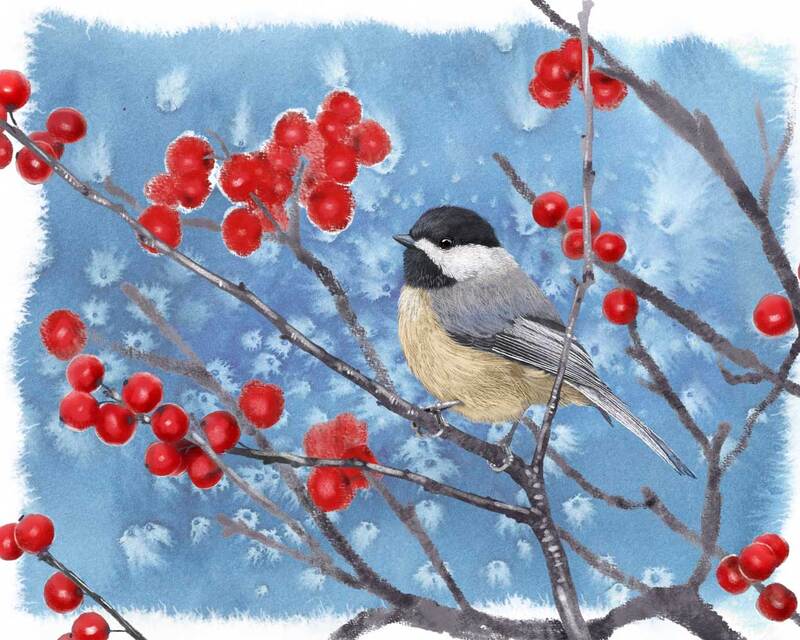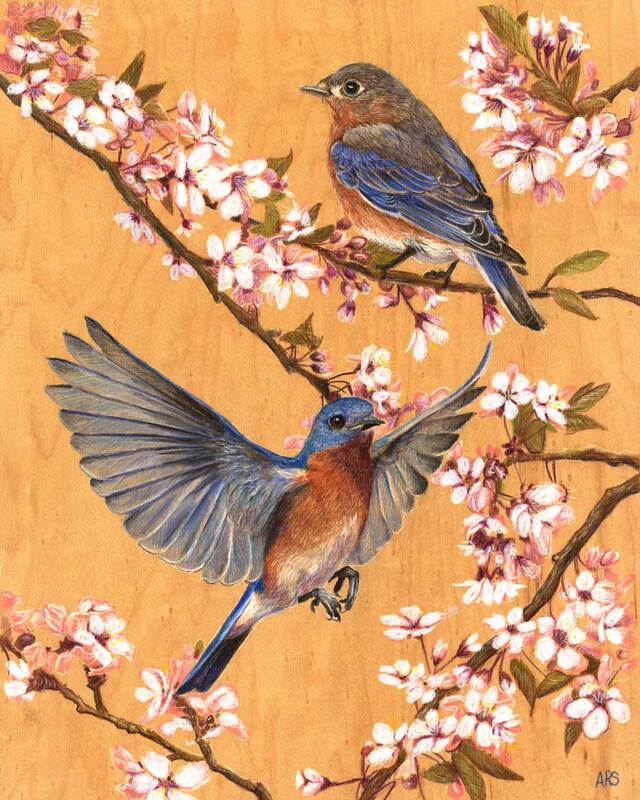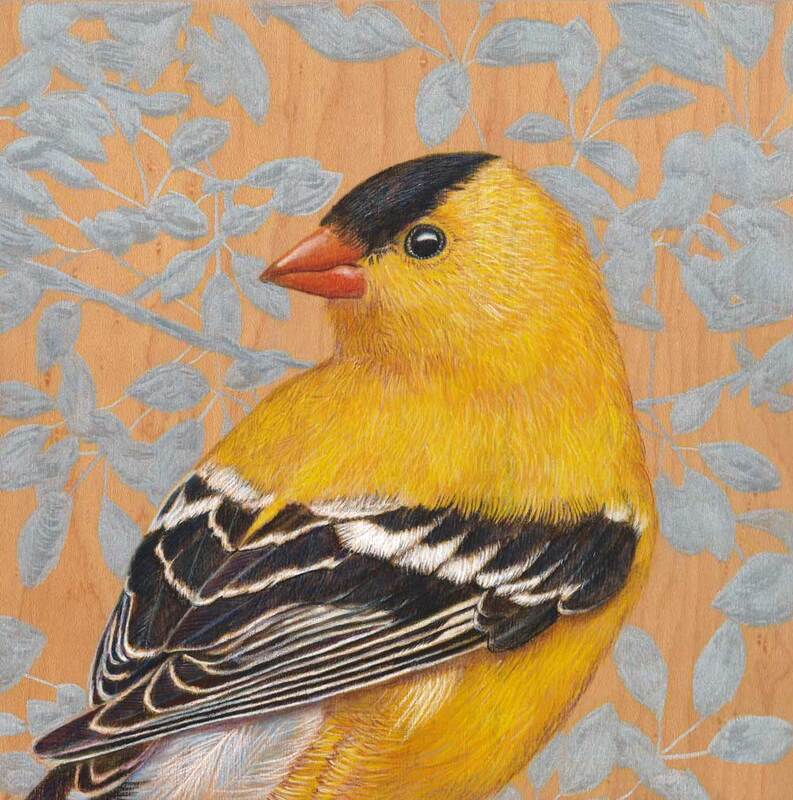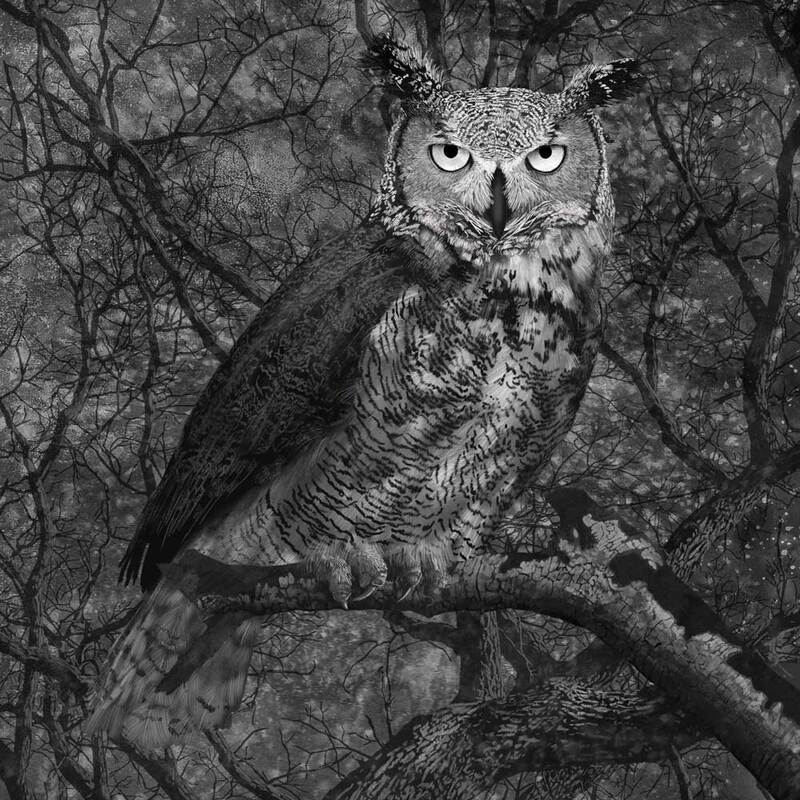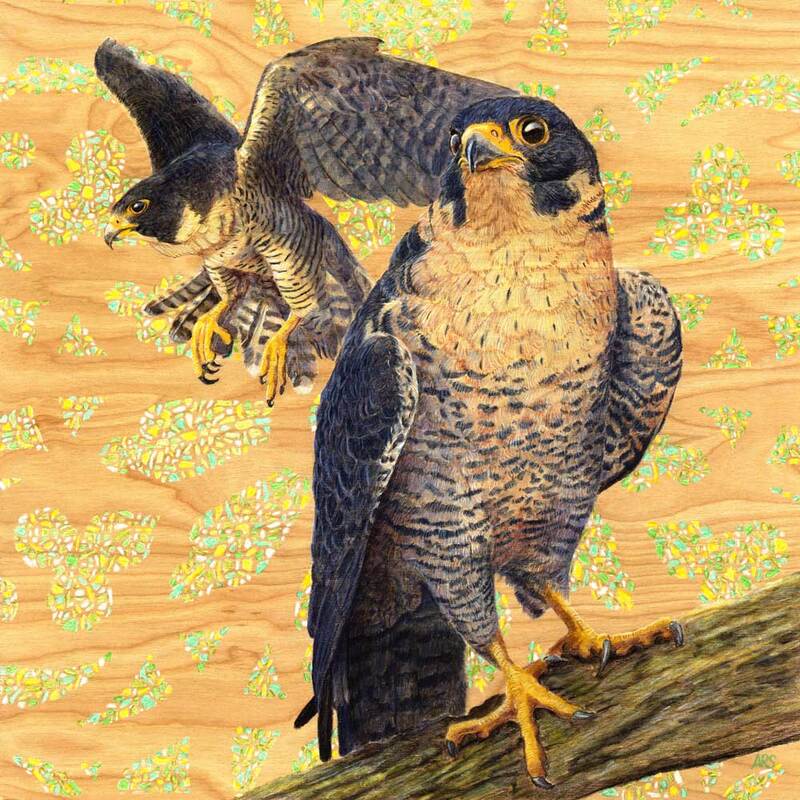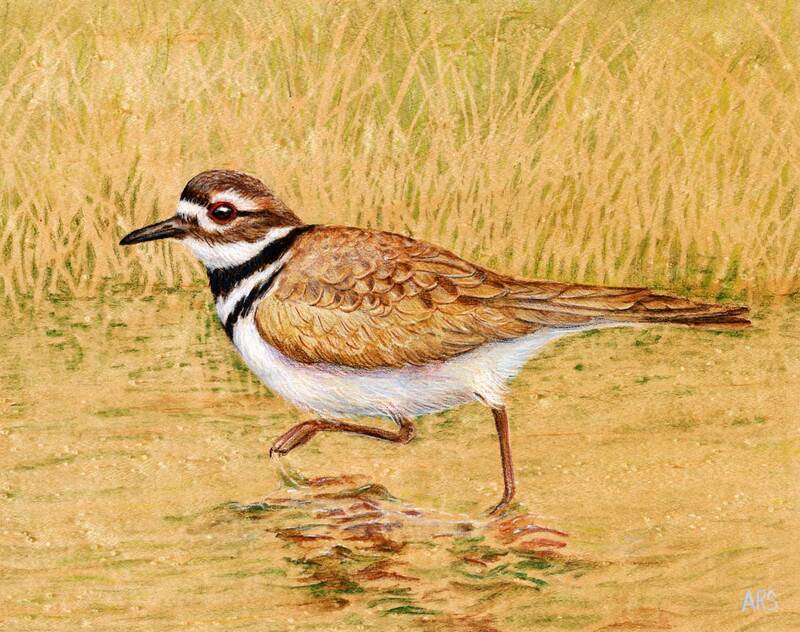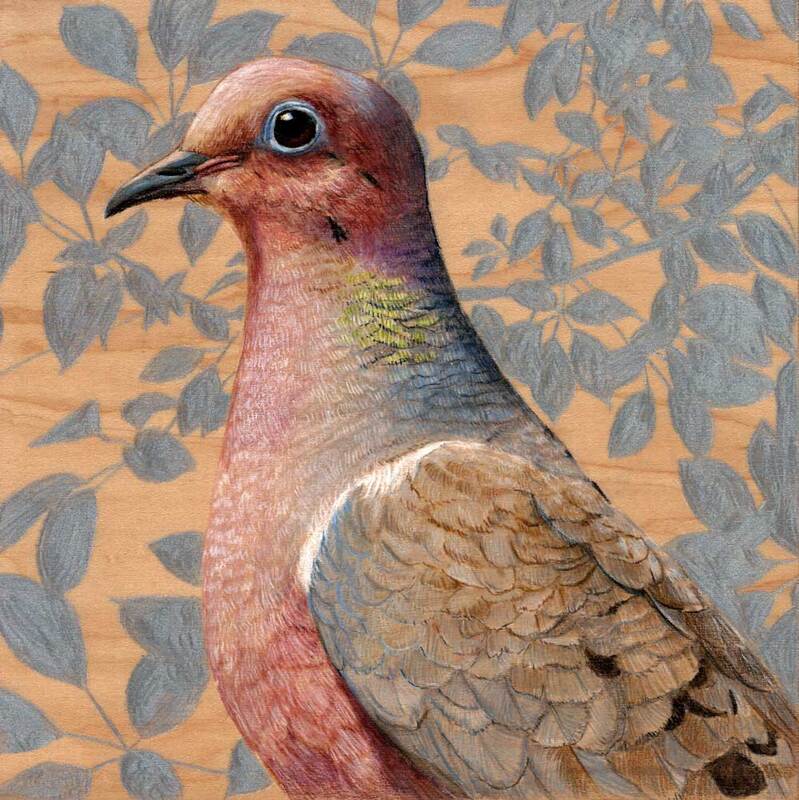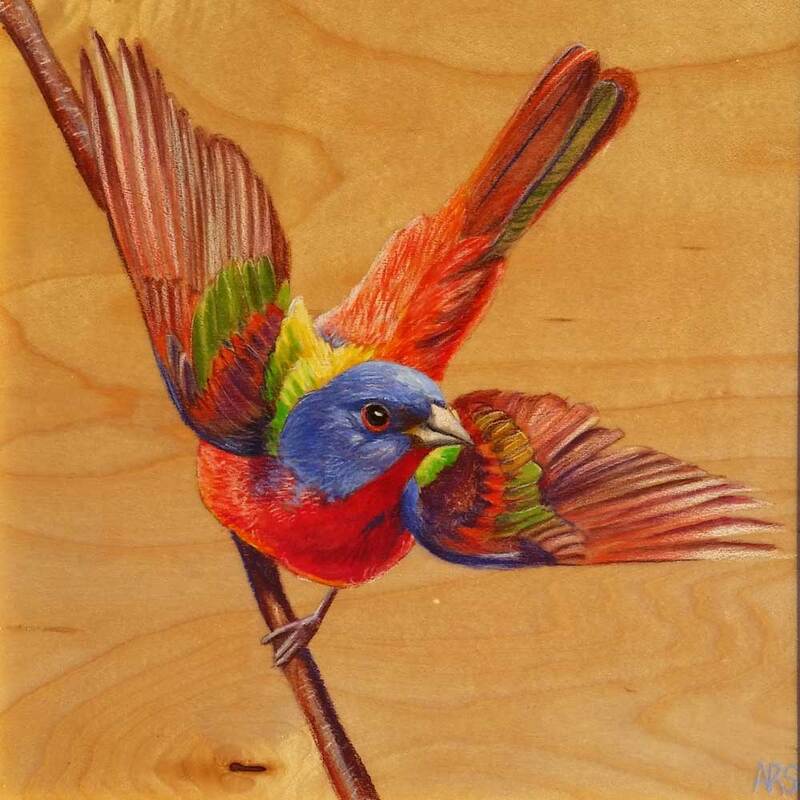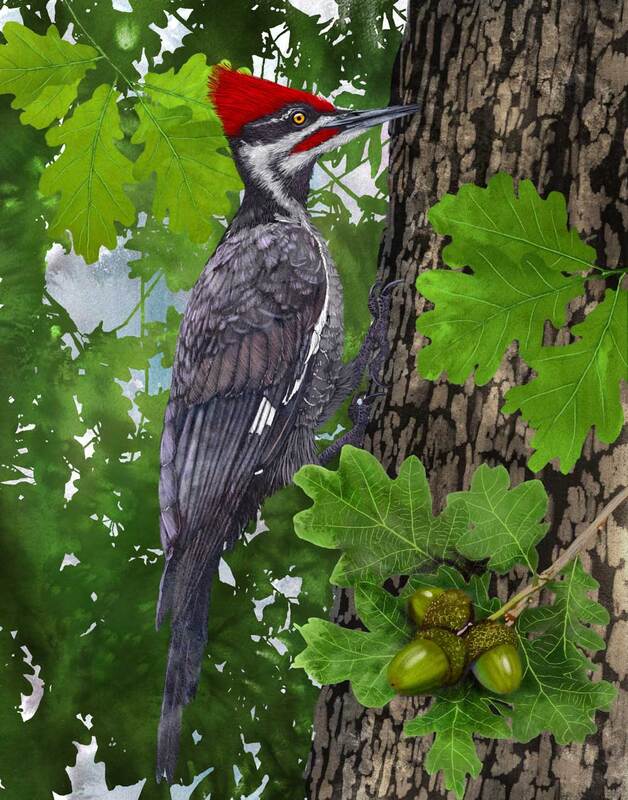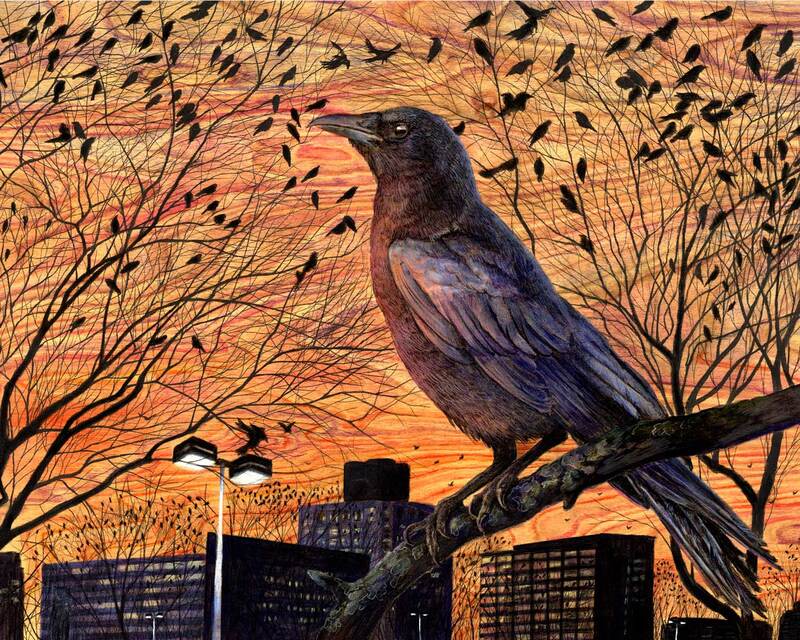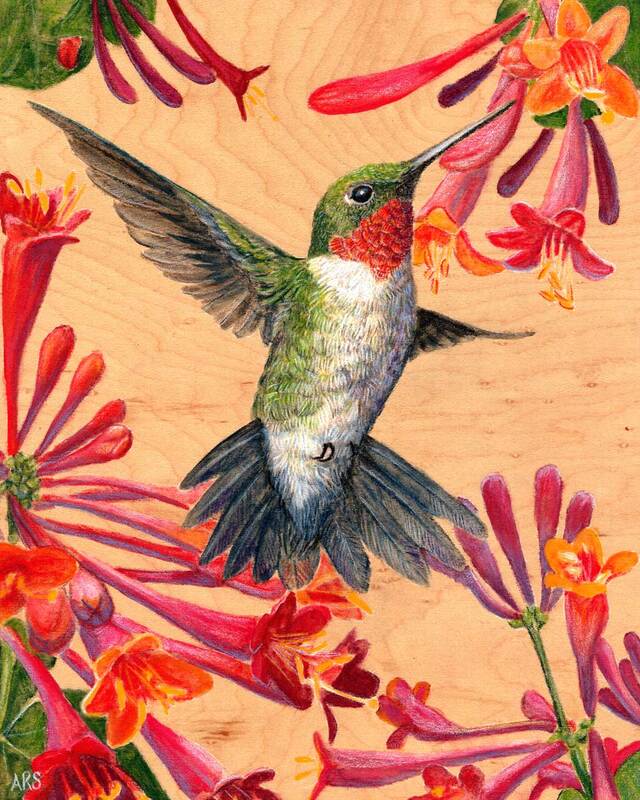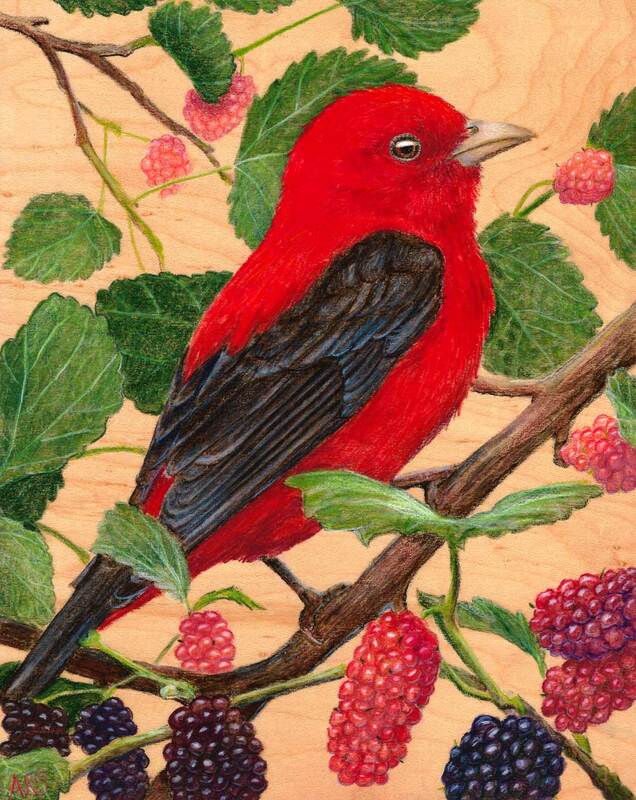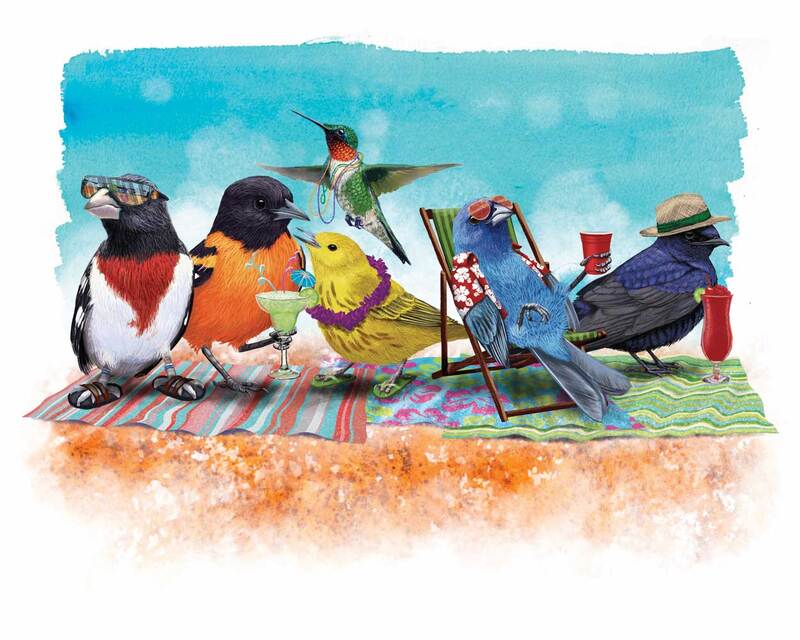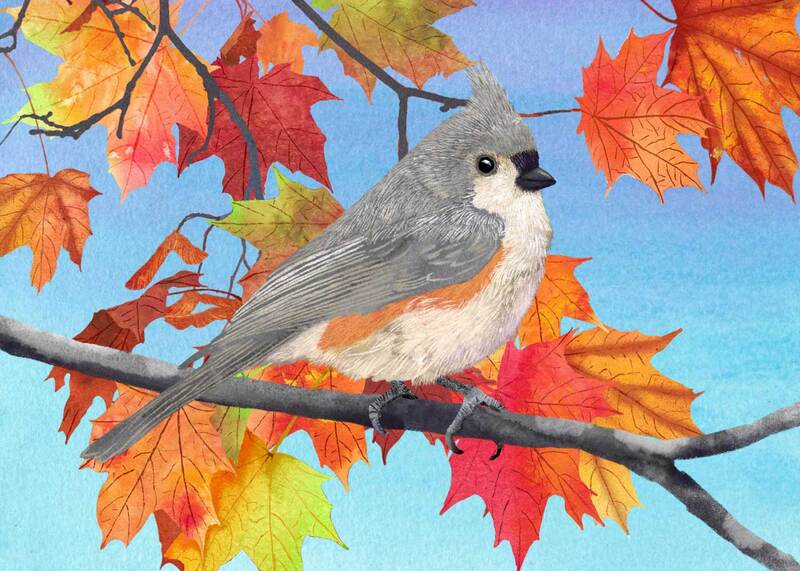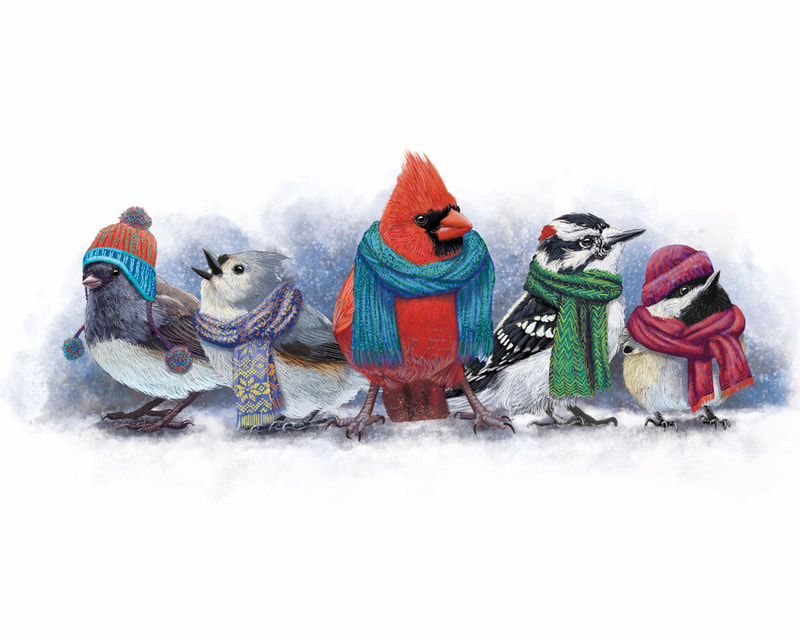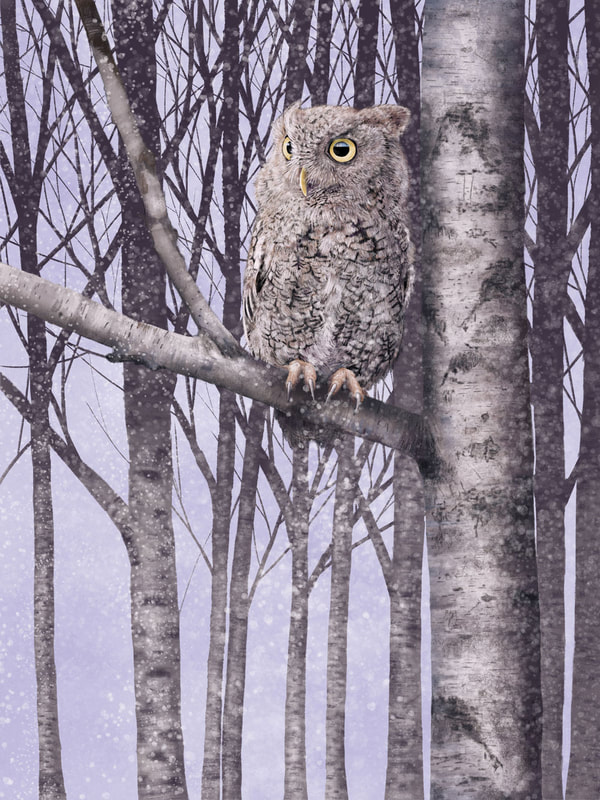LOCALS
an exhibit of birds found in the DC Metropolitan area
I’ve been fascinated by birds for as long as I can remember.
I’m not special in that respect. I think it’s one of the most natural things in the world, to be interested in birds. Artists and engineers have been marveling over birds for centuries. They’re intricate, and beautiful, and they fly.
In the past I’ve painted tropical birds because they’re so colorful, and beautiful, and live in parts of the world that I fantasize about visiting, but in the past few years I’ve been trying to focus on birds that are local to our area. Birds that might be less colorful but that are no less important and interesting.
Having my first child just as the pandemic started forced me to slow down and be really introspective. Outside was really the only place where I could safely be with my kid for what felt like a very long time, and rather than keep doom-scrolling social media and binging news podcasts that made me even more tense and anxious, I tried to focus on—literally—hyper-local subjects as a way to distract myself from existential dread.
I started to notice the world around me a little more closely. Trees that I’d walked past for years and never gave a second glance at were suddenly more interesting. I downloaded the Seek app (formerly iNaturalist) and started trying to identify plants and mushrooms and bugs that I’d never noticed before.
And then, naturally, I started to pay closer attention to birds. I already had a bird feeder outside of our window but it was like an obligatory thing of “I like birds therefore I have a bird feeder and that helps the birds and, yay, nature!” But I actually started to pay attention to the bird feeder and noticed that the birds that emptied the entire birdfeeder every single day were flocks of European starlings and European house sparrows, and not the birds that were featured on the bag of birdseed. I wasn’t benefiting the birds that I actually wanted to see.
I eventually realized that the reason why I was getting all the invasive species was because the birdseed was full of European seeds like Millet, sunflower—basically all the things that old world birds love. That was also why I kept getting crazy weeds in the bushes and in the yard. I switched birdseed. Not only did the mobs of invasive birds disappear and I got to see prettier birds like cardinals and goldfinches up close, but the amount of time I had to spend pulling weeds at our rental house significantly decreased.
Then, we bought our first house and that kicked off a whole new round of carefully examining our new environment. For example, what’s that bush? It’s really pretty, and it’s got leaves and berries on it. Why does it have berries on it even though it’s the dead of winter? Why don’t the birds eat the berries? Let me just pull out my app--Ah, because the birds are smart and they’ve already figured out that the berries and leaves from this invasive heavenly bamboo bush are toxic to basically everyone. And we should get rid of it immediately before the toddler tries to put it in her mouth or feed it to the dog.
As my kid has grown from baby to pre-schooler, she’s gotten extremely perceptive. She notices everything, and it feels like I’m getting pelted with questions all the time. Although it drives me insane on the days when all I want to do is listen to a podcast about murder while she plays in the park, they’re sometimes really good questions that we should be asking ourselves.
Like, why do birds hit windows?
Why do birds make the noises they do? What are they trying to say?
Why do some birds build nests in trees and why do others build nests in dryer vents and mailboxes?
Why do some birds fly away when they see you and why do some of them come close enough to literally steal your lunch?
I’m hoping that this little art exhibit inspires people to slow down, take a break, start asking similar questions and really start noticing the world around them. I’m hoping that if people will stop and really examine not just what’s happening to the planet on a global level, but what’s literally happening in their backyard, that people will make decisions that benefit all Locals—humans and birds alike.
I’m not special in that respect. I think it’s one of the most natural things in the world, to be interested in birds. Artists and engineers have been marveling over birds for centuries. They’re intricate, and beautiful, and they fly.
In the past I’ve painted tropical birds because they’re so colorful, and beautiful, and live in parts of the world that I fantasize about visiting, but in the past few years I’ve been trying to focus on birds that are local to our area. Birds that might be less colorful but that are no less important and interesting.
Having my first child just as the pandemic started forced me to slow down and be really introspective. Outside was really the only place where I could safely be with my kid for what felt like a very long time, and rather than keep doom-scrolling social media and binging news podcasts that made me even more tense and anxious, I tried to focus on—literally—hyper-local subjects as a way to distract myself from existential dread.
I started to notice the world around me a little more closely. Trees that I’d walked past for years and never gave a second glance at were suddenly more interesting. I downloaded the Seek app (formerly iNaturalist) and started trying to identify plants and mushrooms and bugs that I’d never noticed before.
And then, naturally, I started to pay closer attention to birds. I already had a bird feeder outside of our window but it was like an obligatory thing of “I like birds therefore I have a bird feeder and that helps the birds and, yay, nature!” But I actually started to pay attention to the bird feeder and noticed that the birds that emptied the entire birdfeeder every single day were flocks of European starlings and European house sparrows, and not the birds that were featured on the bag of birdseed. I wasn’t benefiting the birds that I actually wanted to see.
I eventually realized that the reason why I was getting all the invasive species was because the birdseed was full of European seeds like Millet, sunflower—basically all the things that old world birds love. That was also why I kept getting crazy weeds in the bushes and in the yard. I switched birdseed. Not only did the mobs of invasive birds disappear and I got to see prettier birds like cardinals and goldfinches up close, but the amount of time I had to spend pulling weeds at our rental house significantly decreased.
Then, we bought our first house and that kicked off a whole new round of carefully examining our new environment. For example, what’s that bush? It’s really pretty, and it’s got leaves and berries on it. Why does it have berries on it even though it’s the dead of winter? Why don’t the birds eat the berries? Let me just pull out my app--Ah, because the birds are smart and they’ve already figured out that the berries and leaves from this invasive heavenly bamboo bush are toxic to basically everyone. And we should get rid of it immediately before the toddler tries to put it in her mouth or feed it to the dog.
As my kid has grown from baby to pre-schooler, she’s gotten extremely perceptive. She notices everything, and it feels like I’m getting pelted with questions all the time. Although it drives me insane on the days when all I want to do is listen to a podcast about murder while she plays in the park, they’re sometimes really good questions that we should be asking ourselves.
Like, why do birds hit windows?
Why do birds make the noises they do? What are they trying to say?
Why do some birds build nests in trees and why do others build nests in dryer vents and mailboxes?
Why do some birds fly away when they see you and why do some of them come close enough to literally steal your lunch?
I’m hoping that this little art exhibit inspires people to slow down, take a break, start asking similar questions and really start noticing the world around them. I’m hoping that if people will stop and really examine not just what’s happening to the planet on a global level, but what’s literally happening in their backyard, that people will make decisions that benefit all Locals—humans and birds alike.
Currently on display at
ARTOMATIC
4th Floor, Room 4067
2100 M Street NW
Washington, DC 20037
March 8th - April 28th 2024
Opening Night: March 8th
Meet the Artist Days: March 23rd, April 13th
Hours
WED-THURS | 5:00PM - 9:30PM
FRI-SAT | 12:00 PM - 12:00AM
SUN | 12:00PM - 9:00PM
MON-TUES | CLOSED
ARTOMATIC
4th Floor, Room 4067
2100 M Street NW
Washington, DC 20037
March 8th - April 28th 2024
Opening Night: March 8th
Meet the Artist Days: March 23rd, April 13th
Hours
WED-THURS | 5:00PM - 9:30PM
FRI-SAT | 12:00 PM - 12:00AM
SUN | 12:00PM - 9:00PM
MON-TUES | CLOSED
Past Exhibit Locations
Hollingsworth Art Gallery
National Wildlife Visitor Center
Patuxent Research Refuge
Laurel, MD
February 2024
Watkins Nature Center
Watkins Regional Park
Upper Marlboro, MD
October 2023 - January 2024
Brookside Nature Center
Wheaton Regional Park
Wheaton, MD
April - October 2023
Greenbelt Arts Center
Greenbelt, MD
March 2023
Hollingsworth Art Gallery
National Wildlife Visitor Center
Patuxent Research Refuge
Laurel, MD
October 2022
National Wildlife Visitor Center
Patuxent Research Refuge
Laurel, MD
February 2024
Watkins Nature Center
Watkins Regional Park
Upper Marlboro, MD
October 2023 - January 2024
Brookside Nature Center
Wheaton Regional Park
Wheaton, MD
April - October 2023
Greenbelt Arts Center
Greenbelt, MD
March 2023
Hollingsworth Art Gallery
National Wildlife Visitor Center
Patuxent Research Refuge
Laurel, MD
October 2022
